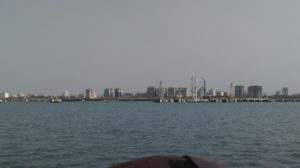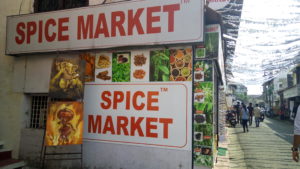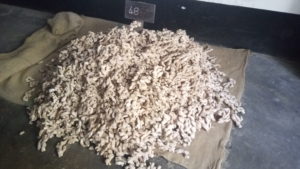Mattancherry rewind: Gujarati trader’s tryst with spice
Although Gujarati’s are known for their incomparable trade skills, their story as a community which settled in Mattancherry and excelled the spice business in India’s spice hub is a wonder on its own.

I
ndia has always been known as the land of spices and Kerala as one of its primary hub for spice trade. Kerala had monopoly over spice trade as its ancient port of Muziris became the base for spice trade worldwide from as early as 3000 BC. It had trade relations with other parts of world for variety of products like coconut, spices, ginger, coffee etc. It also attracted various foreigners who sailed towards this coastal part of India like Christopher Columbus, Vasco Da Gama and others to explore the land full of opportunities. Along with the foreigners, the trade opportunities also attracted various traders from northern part of India to settle in coastal cities of Kerala. Among various communities settled in Kerala, one of them was the Gujarati community. The community began systematic migration to Kerala during 19th century and has settled in various cities in small groups. The members have different stories to narrate about their migration, but there are not any specific witnesses or documentations regarding their reason and time of settlement.
“The Gujarati traders initially only came to Kerala during business season to carry out trade practices from Malabar coast and returned back home during rest of months. But with time and increasing dependence on trade, the community started settling in permanently with the help of Maharaja of Cochin.”

Initially, they were given land in Calicut, Alleppey and were encouraged to establish their trade and also to get their own workers for factories. As the community established themselves, more land was provided for their warehouses and it leads to systematic migration of the community. With better trade opportunities and favorable conditions, traders started settling up with their families permanently. The state provided lots of scope because of the presence of coconut, spices, coir and copra related business. Slowly, the community started gaining monopoly over the spice trade in the region.
The Gujarati street in Mattancherry was focus of our fieldwork. The convener at the samiti’s office informed that various people from different sub communities stay there and are involved in all kind of trades which includes spices (ginger, pepper, and beetle nut), rice, wheat, coir, timber, imports and exports of consumer goods and also in distribution business. New trades are also coming in the community like textiles, hardware, jewellery, electronics, chemicals, rubber, steel.
These businesses were started 1930’s onward till 1970’s-80 and it was the generation of their father and grandfathers who started them. The community people told that during the time of British rule, only big companies were allowed to carry out trade like Walkart brothers. Since Gujaratis had good trade relations with British officials, they were sometimes called as ‘vilaytis’. They talked about how their forefathers came to Cochin from Gujarat in search of better prospects and started workings in the companies owned by Gujaratis or were called by the other members of family who were already settled, to help in the business. Thus, those who worked in the factories slowly started setting up their own business and took the advantage of opportunities present at that time.
Mattancherry and changes in trade practices

As the new port was built, it leads to trade being shifted from Alleppey to Mattancherry. Coming up of railways also made the area favorable for business. Gujarati community is a close knitted community and thus, others Gujarati who were already residing in the area acted as a resource group for the newcomers. The villages and districts nearby were rich in spices, coir and thus, settling here provided the traders an easy access and wholesale trade started here. Also, various land related and labor issues in Alleppey forced them to move to new place. Slowly, these conditions also started attracting other communities to settle in that area which led to new entrants in the trade market like that of coir and spices which was monopolized by Gujaratis for over decades.
Jew town which was the primary spice market in the areas lost its charm over years. With the increasing tourist attraction and influx of galleries and cafes, trade suffered a setback. The commission shops which were earlier the connecting medium between farmers and traders started diminishing. Focusing on the spice trade, their main sources are nearby villages like pepper from eastern part of Kerala; Cardamom from Munnar, Kumili; Nutmeg from Kalari; Black Pepper from Kottayam, Pala and other areas like Idduki, Wayanad, Perambvur, Palghat, Kongad, Angamali, Chelapure, Wandiperiyar and also from commission shops at Jew town. Most of the shops have warehouses in the backyard for storage. Some of the traders involved in the spice trade also told us how they shifted the processing unit near the areas they are grown as it is more cost effective. Those into spices and rice business also sell them to local retailers, export to the northern parts of country and is also sold internationally by some other companies like Bombay exporters and others. They mainly export to Spain, Morocco, Dubai, Saudi Arabia, Yemen, Singapore, Japan, Canada and US.
Talking about changes seen over the years, traders of the community told, “As the society developed and so does the trade, the business became more transparent as new communities joined. Changes came in the way of doing trade like packaging as now they sell to different retailers and have small packaging, changes in prices, and ways of payments. Even coming up of supermarkets helped them in the business as they sell it to them directly.”

Also many changes facilitated the trade like the better communication and improved infrastructure and coming up of modern machines and techniques. Development of transportation had dual effects as it benefitted as well as harmed the business. As on one hand, with the development of road and railways transportation the goods are now delivered fast and they don’t have to wait for bulk orders as now small quantities can be transported with the coming up of lorries. But on the other hand, it allowed easier access for the direct buyers to the farmers like MNC’s and other big retailers. Due to this, Mattancherry lost its significance as important trading port center. Direct trade increased as now buyers directly goes to the farmers and thus, there is no need for middle party who earlier used to get products from farmers to Jew town or other prime markets and sell them to buyers which further used to export it. Even the farmers now are aware of the prices and thus, they sell their produce to the dealers. MNC’S come up in local areas and started their processing units there. As the competition increased, profits started declining. Market is now more regulated as compared to earlier times. Even a new port came up in Cochin – Vallarpadam terminal from where now all the exports are done and old Willington island and Mattancherry lost its significance. These changes effected different business in different ways and the one which it mostly affected was the spice and coir trade.
Is Kerala losing its spices?
All these issues are affecting the trade in Kerala as now it is being shifted to nearby states like Tamil Nadu and Karnataka. There is lack of space in Kerala as seen in Alleppey and Calicut where now rubber is grown in the place of spices. The costing and labor issues in state have added to the woes. Other states are providing incentives to farmers for growing these spices in terms of concession on land, water and electricity.
“Karnataka has become the largest seller as they sell the spices at cheaper rate which attracts the buyer despite of compromises in its quality as compared to Kerala’s. Tamil Nadu is taking over the coir trade. Even there are many international competitors like Sri Lanka, Vietnam, Brazil, Indonesia, Ethiopia.”
Another development which is taking place in Kerala is the coming up of foreign investments and companies for partnership in India for which main reason is the extraction business. 90 per cent extraction business has moved from US, Canada to India and 75 per cent is done in Cochin. Some community people explained how after extracting the spices, the residue material is expected to be destroyed, but in India there is altogether a market for the residue. Here, the companies sell the residue to the small masala companies who use it for making cheap masala (waste that of pepper, ginger, turmeric, cumin is being used). Thus, this is a profitable business for them.
New generations, new paths!
From the last 15, younger generation Gujarati spice traders are moving out the Mattancherry area. They either go abroad for education and for better job opportunities. Some of them even migrate to other big cities like Mumbai, Bangalore etc. They are taking up courses like MBA, CA which indicate that they prefer to go for settled jobs instead of family businesses. In each family, it was found that one of the children was based in a foreign country like the US, UK, Australia, Gulf countries. This also brought changes in the family structure as more and more nuclear families can be seen there. This affected the business very badly as when there is no one to look after the business, many traders in old age prefers to close down it or merge it with other companies. Thus, most of the traders interviewed were in the age group 50’s-60’s and the family business now close after 3rd-4th generation.
Thus, through this in depth research work on Gujarati community, we looked at the changes coming up in their trade activities for last few decades. With the aim to look at their participation with spice trade presently and involvement of present generation in trade, we found out many more interesting findings linked to it like labor issues, effect of development on trade, consequences of direct trade, new businesses. Spice trade is declining not only in community, but also in the state of Kerala. Mattancherry is becoming residential area and losing its identity as an important business centre.
(This feature article is based on a dissertation fieldwork as part of our undergraduate sociology course at Lady Shri Ram College for Women conducted during January 2017. It talks about the Gujarati community settled in Mattancherry, Kochi for generations and changes in their trade practices (with special focus on spice trade) over years. It is based on a series of interviews taken from different respondents like traders, commissioning agents, teachers and students. The members are part of the samiti called Shri Cochin Maharaj Gujarati Mahajan Samiti which works as the official body for the community and also looks after education, health and other facilities for its members)
